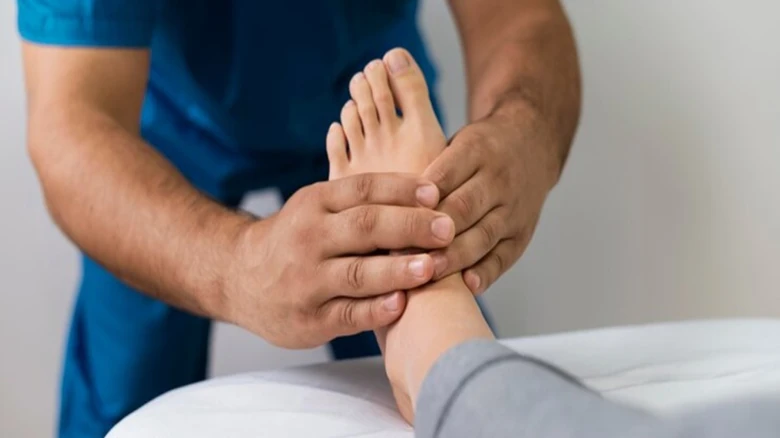While social media frequently presents novel solutions for concerns ranging from dehydration to stomach issues...
Digital Desk: In the vast realm of social media, where information flows ceaselessly, users often stumble upon intriguing solutions to everyday issues. One such suggestion recently caught our attention, as content creator Alan Mandell proposed a unique approach to induce sleep through acupressure. While social media frequently presents novel solutions for concerns ranging from dehydration to stomach issues, it's crucial to approach these with a degree of skepticism.
Mandell's claim revolves around a specific acupressure point, SP6, nestled inside the leg, approximately four finger-widths above the ankle, just behind the tibia bone. According to him, applying pressure to this point could not only promote better sleep but also alleviate menstrual cramps. Intrigued, we sought insights from Dr. Rohini Patil, a respected nutritionist and founder of Nutracy Lifestyle.
Dr. Patil acknowledged that acupressure on specific points, including SP6, is believed by some to offer potential benefits for sleep and menstrual cramps. Proponents even suggest that incorporating SP6 acupressure into a daily routine might lead to a gradual improvement in sleep quality.
The technique involves applying gentle but firm pressure to SP6 for approximately one minute, followed by holding it for an additional two minutes. This, according to Dr. Patil, is thought to regulate energy and blood flow in the pelvic area.
Beyond its potential sleep-inducing effects, SP6 acupressure is also explored as a natural remedy for addressing premenstrual syndrome and anxiety. Dr. Patil emphasized the anecdotal nature of the evidence supporting acupressure's efficacy and highlighted the need for large-scale randomized control studies to confirm its association with improved sleep in some patients.
While acknowledging the potential benefits, experts caution that more research is required, particularly in the context of insomnia. They suggest that stimulating multiple pressure points, rather than focusing on a single point, may hold promise in addressing sleep disorders. The field awaits comprehensive studies to provide a clearer understanding of the effectiveness of acupressure in promoting sleep.
Social media's role in disseminating unique solutions to everyday concerns is undeniable. While the notion of using acupressure on specific points like SP6 for better sleep is intriguing, it is essential to approach such information with a cautious mindset. As we delve into the realms of alternative remedies, a balanced perspective that combines anecdotal evidence with scientific scrutiny is crucial for making informed decisions about our well-being.

Leave A Comment